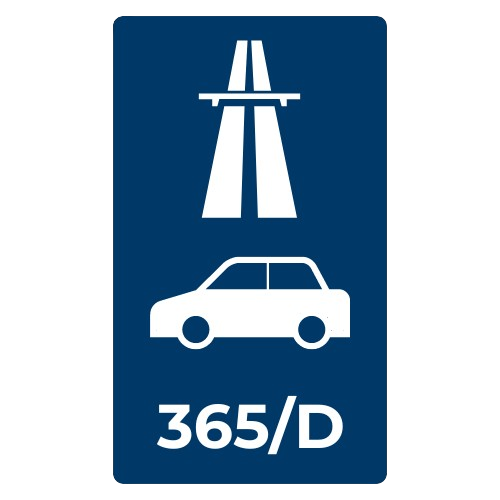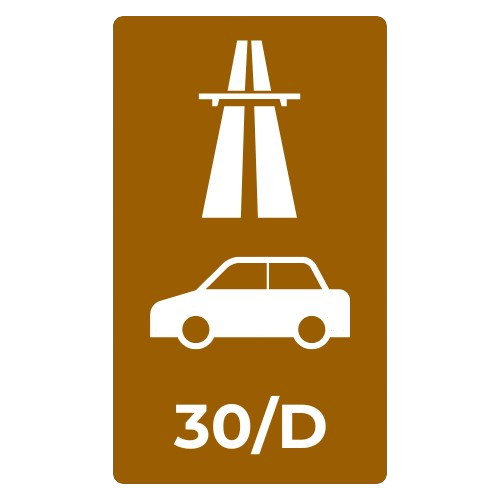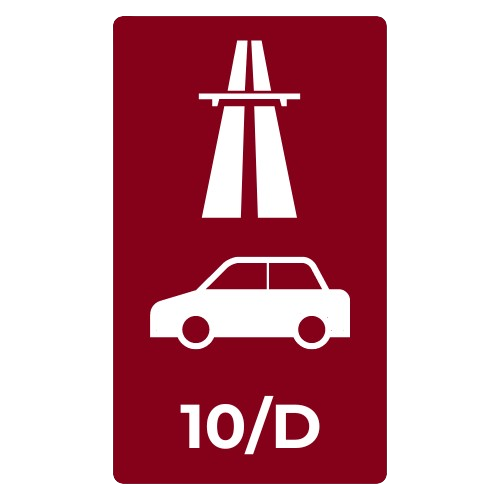Updates 2025 – Electronic Vignette in Slovakia
The Ministry of Transport of the Slovak Republic, in close cooperation with highway authorities and other relevant institutions, has introduced new rules, payment methods, and technological solutions that will not only simplify the purchase and management process but also integrate advanced monitoring and data analysis systems. In this update, we outline the key measures—including specific projects and roadway improvements—that are now scheduled to take effect.

Legislative Changes and Rule Updates

Strengthening Control Mechanisms
Beginning January 1, 2025, new regulations require an electronic verification of the vignette’s validity at all major highway checkpoints. For example, on the D1 motorway—which connects Bratislava to Košice—drivers will now pass through automated checkpoints equipped with state-of-the-art control cameras manufactured by Bosch. These cameras will be linked to a central database managed by Slovak authorities, enabling immediate identification of vehicles without a valid vignette.

Tariff Adjustment
The new rules introduce a tariff increase of approximately 5% for passenger vehicles. Additionally, a differentiated tariff structure for trucks is being implemented, taking into account the vehicle’s emission class. For instance, trucks that meet the Euro 5 standard will be charged at a lower rate compared to those classified as Euro 4. These changes, specified in the updated legislative amendment published by the Slovak Ministry of Transport, aim to ensure that users contribute fairly to the upkeep and modernization of the highway network.

Digitization of Management
In a major overhaul, the entire vignette management system has been transitioned to a fully digital platform. Now, drivers can purchase, renew, and verify their vignette’s validity online via the official portal and a dedicated mobile application. This digital system features an automated transaction recording process that eliminates the need for paper documents, thereby reducing administrative delays and errors.

Introduction of Ecological Incentives
To promote environmental sustainability, new regulations offer special discounted tariffs for vehicles with lower emissions. For example, owners of electric vehicles and plug-in hybrids can enjoy discounts of up to 15% compared to standard rates. This initiative is outlined in an addendum to the current transport directive and is designed to encourage the adoption of greener technologies and reduce the overall carbon footprint of road transportation in Slovakia.
Infrastructure Investments and Modernization

Reconstruction and Maintenance of Motorways
As part of the state investment plan for 2025, extensive modernization projects are underway on key Slovak motorways. A prominent example is the planned reconstruction of the D1 motorway between Bratislava and Košice. This critical corridor, which handles a significant portion of national traffic, suffers from severe pavement wear and outdated infrastructure. The project includes resurfacing the damaged sections, re-marking lane divisions, and upgrading drainage systems to prevent water accumulation and reduce the risk of aquaplaning. In addition, several new rest areas and service stations are scheduled for construction along this route to improve driver convenience and safety.

Expansion of the Monitoring Network
In order to bolster enforcement and improve real-time traffic management, the government is expanding the network of control cameras and sensors along major highways. For instance, on the D1 motorway, additional cameras will be installed at critical entry points near Bratislava and along segments approaching the High Tatras region. These advanced sensors will work in tandem with the digital management system, offering enhanced detection of vehicles without a valid vignette and facilitating immediate interventions when violations are detected.

Implementation of a Statistics and Analysis System
A new data collection and analysis system is being implemented on key highway sections—particularly along the D1 and D2 motorways. This system will regularly gather data on traffic incidents, accidents, and vignette-related violations. The resulting statistics will provide detailed insights into traffic patterns, enforcement effectiveness, and potential areas for further improvement. By analyzing these data trends, authorities hope to optimize control measures and allocate resources more efficiently.
Technological Innovations and New Payment Systems

Mobile Application and Online Services
The newly developed mobile application for the Slovak vignette system allows users to easily purchase, renew, and check the validity of their vignette. Integrated with the national digital identity system, the app employs robust encryption and security protocols to ensure that the verification process is seamless and that all transactions are secure. This upgrade not only improves user convenience but also enhances the overall integrity of the system.

Contactless Payments
In an effort to modernize and streamline the payment process, the system now supports a range of contactless payment options. Drivers will be able to pay using credit cards, online banking solutions, as well as mobile payment systems such as Apple Pay and Google Pay. Additionally, the use of QR codes at kiosks and service points further expedites transactions and reduces waiting times at toll booths.

Integration with Remote Verification
Cutting-edge technology now enables real-time verification of vignette validity by security forces. This is achieved through the integration of data from intelligent cameras installed at strategic checkpoints. For example, when a vehicle enters a monitored zone on the D1 motorway, the system immediately cross-checks its vignette status and notifies authorities of any discrepancies, allowing for prompt intervention.

Testing of New Technologies
Pilot projects are currently underway to test autonomous control systems and predictive analyses of traffic conditions. These projects, conducted on selected sections of the D1 and D2 motorways, aim to further improve the efficiency of control measures. The systems under test utilize machine learning algorithms to predict traffic patterns and potential violation hotspots, thereby enabling proactive rather than reactive enforcement strategies.
Enhanced Safety and Fraud Prevention

Advanced Digital Authentication
Advanced authentication methods, including biometric verification and multi-factor authentication, are being introduced to ensure that only authorized users can access the system, thereby significantly reducing the risk of fraud.

Modern Encryption Technologies
Modern encryption techniques are employed to secure all personal and transactional data, protecting users from unauthorized access and cyber threats.

Regular Security Audits
The system will undergo frequent security audits and updates to ensure it remains resilient against evolving cyber threats, maintaining a high standard of data integrity and user trust.
Innovative Information Channels and Active Communication

Expansion of the Information Portal
The official vignette portal is being upgraded with interactive features, including mobile apps and web widgets, to facilitate easy access to up-to-date information regarding tariffs, rules, and service updates.

Push Notifications and Real-Time Updates
Users will receive instant notifications regarding changes in regulations, traffic conditions, and any other important updates through push notifications on their smartphones.

Active Communication on Social Network
In addition to the official portal, authorities are enhancing their presence on social media platforms such as Facebook, Twitter, and LinkedIn to disseminate critical information quickly and to engage with the driving community for feedback and support.
Economic and Social Impacts

Analysis of the Impact on the State Budget
The introduction of new technologies and the modernization of infrastructure are expected to increase revenues from the vignette system. For example, improved compliance and efficient enforcement on highways like the D1 and D2 will contribute to higher toll collection rates, which in turn will support funding for ongoing maintenance and further development of the transport network.

Social Aspects and User Support
The improvements in the vignette system will enhance driver comfort by providing greater tariff transparency and improved customer service. Detailed information campaigns and training sessions are being planned to ensure that all users, including long-distance commuters and commercial drivers, are fully informed about the new system features and updates. These initiatives are designed to build public trust and ensure a smooth transition during the implementation phase.




